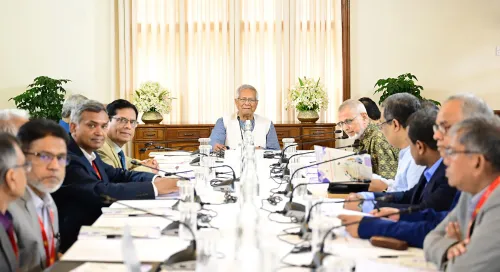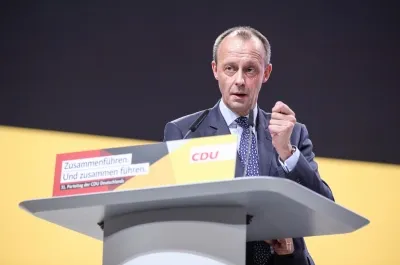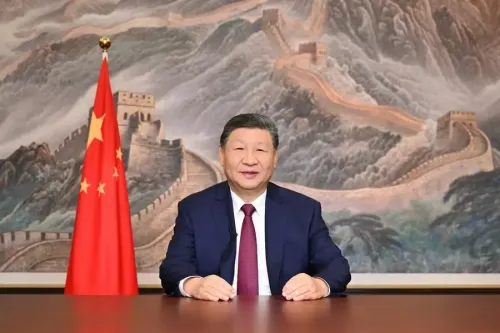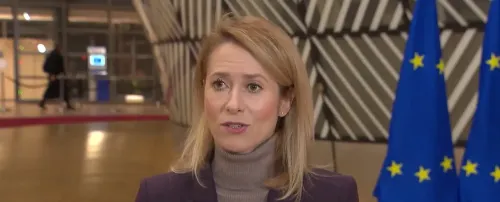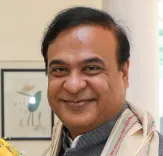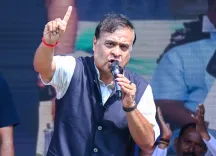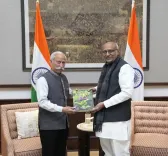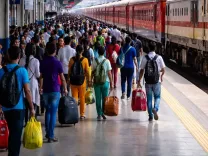Why Are CNG Drivers Blocking Roads in Banani, Dhaka?
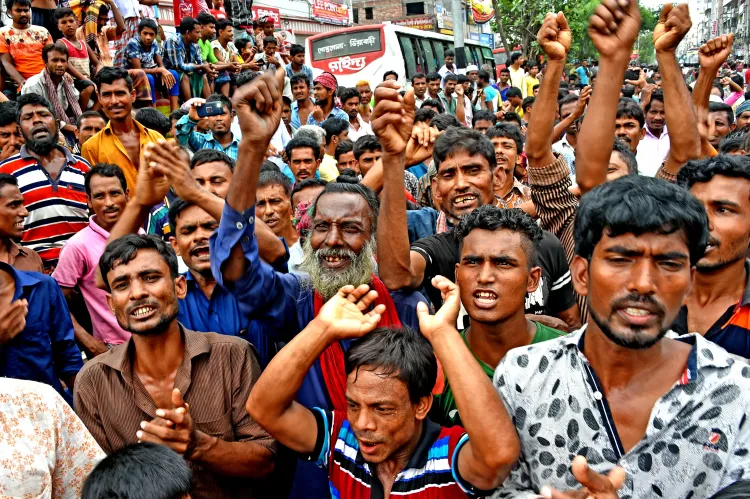
Synopsis
Key Takeaways
- Significant traffic disruptions occurred due to the protest in Banani.
- CNG drivers are advocating for fixed routes to improve public transport.
- Authorities are monitoring the situation closely to ensure public safety.
- The elevated expressway provided some relief for commuters.
- The demonstration highlights the necessity for better regulation of CNG auto-rickshaws.
Dhaka, July 13 (NationPress) On Sunday, CNG-operated auto-rickshaw drivers in Dhaka organized a significant protest, obstructing major roads in Banani and creating extensive traffic disruptions on the Uttara–Mohakhali route.
Clad in symbolic shrouds, the protesters insisted on establishing fixed routes for CNG auto-rickshaws within the capital and vowed to persist in their demonstrations until their requests are fulfilled.
The rally commenced around 10 a.m. outside the Bangladesh Road Transport Authority (BRTA) headquarters in Banani, resulting in a complete halt of traffic in both directions.
Mehedi Hasan, the investigation officer at Banani Police Station, confirmed the situation, stating, “CNG drivers have blocked the Dhaka-Mymensingh road in Banani, stopping traffic flow.”
Police are actively working to restore order, he added.
Earlier that day, CNG drivers from regions outside Dhaka joined forces with their local colleagues to stage a sit-in on the main road, pressing for various demands. As the blockade extended into the afternoon, traffic authorities released multiple updates and advisories to assist commuters in managing the disruption, as reported by The Dhaka Tribune.
The elevated expressway remained operational for outbound travel and was also available for vehicles traveling from Uttara to Tejgaon or Hatirjheel, offering some relief to the city’s congested traffic system.
To ensure public safety and control the growing crowds, additional police personnel were deployed in the vicinity. Authorities continued to keep a close watch on the situation, encouraging commuters to stay informed through official traffic updates and adhere to the suggested alternative routes.
The protesting CNG drivers have made it abundantly clear that their demonstrations will persist until their demands for fixed routes are met, raising concerns about potential further traffic disruptions in the days ahead.
This protest has ignited a broader discussion regarding the regulation and management of CNG auto-rickshaws in Dhaka, which play a crucial role in the city’s public transportation network.


